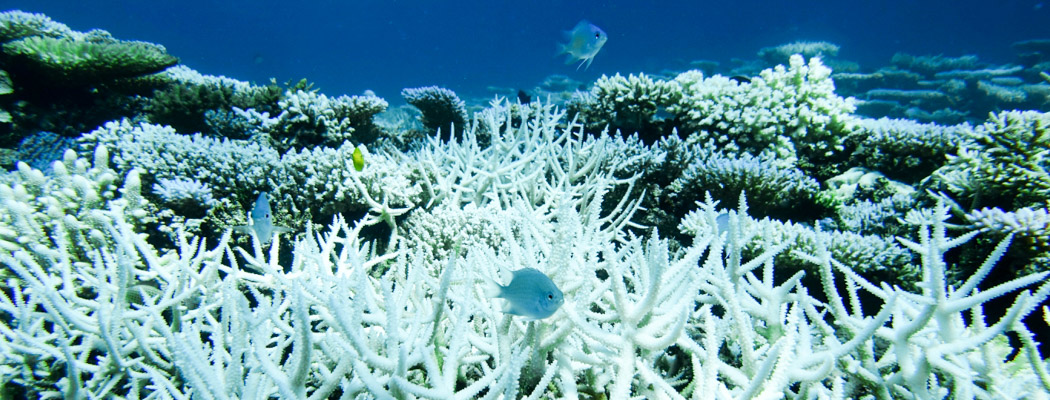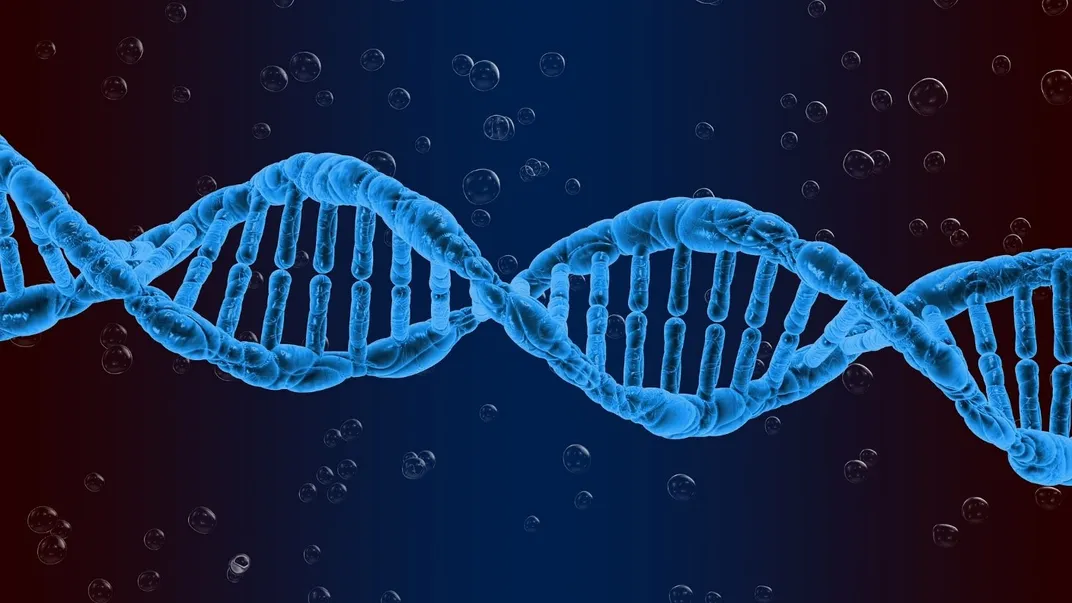NATIONAL MUSEUM OF NATURAL HISTORY
DNA Makes Waves in the Fight to Save Coral Reefs
Environmental DNA could help scientists understand and anticipate the threats coral reefs face.
/https://tf-cmsv2-smithsonianmag-media.s3.amazonaws.com/blogging/featured/Healthy_coral_reef_under_clear_blue_water.jpg)
Coral reefs house roughly a quarter of all known marine species, making them some of the most biodiverse ecosystems on the planet. But as their environments have become less friendly from climate change in recent decades, corals are struggling to stay healthy and support the life that relies on them.
Now, thanks to an emerging technique called environmental DNA (eDNA), researchers at the Smithsonian’s National Museum of Natural History can support worldwide efforts to understand how corals and the communities that depend on them are responding to global ocean change. What they find could help scientists understand and anticipate the threats coral reefs face.
“This has opened up new ways of looking at questions that we haven’t been able to ask,” said Chris Meyer, a research zoologist and curator of invertebrates at the museum. “It can give us an incredibly rich understanding of the ocean and its response to change.”
Coral-ing the threats on corals
Corals are made of thousands of small organisms called polyps that work together to gather food and build a strong skeleton. But polyps can’t thrive without their photosynthetic algal roommates. Their mutually beneficial relationships with different algae species provide them important nutrients, while the coral gives the algae a safe place to live.
But every relationship faces challenges and algae and coral are no exception. The pair is struggling with warming ocean temperatures caused by climate change.

“Increased temperatures cause shallow water corals to ‘bleach.’ This means that the algae get expelled from the coral tissue,” said Andrea Quattrini, a research zoologist and curator of Anthozoa in the Department of Invertebrate Zoology at the museum. “Although some corals can survive or recover from these events, it often causes mass mortality.”
Like their shallow water counterparts, deep sea corals are also combating another problem: ocean acidification. As carbon dioxide enters the atmosphere, the ocean absorbs it and becomes more acidic. Increased acidity makes it harder for corals to build their skeleton. Without a strong skeleton, the reefs become vulnerable and weak.
“At certain depths in the oceans, there is something called an Aragonite Saturation Horizon. Below this depth, corals have a hard time making their skeletons,” Quattrini said. “Most corals build reefs above this horizon but the decreasing pH levels is causing the horizon to become shallower. This will make it very hard for deep sea corals to construct their skeletons.”
Monitoring coral reefs and knowing which coral species live where helps researchers understand which species are at risk from rising temperatures and acidity. Now, scientists have a less damaging and more cost-effective way to study the reefs and the potential dangers facing them.
A library of samples
Environmental DNA studies are based on collecting samples, like water or soil, from a location to study. Inside those samples are DNA particles shed from the species living in the area — which scientists can use to detect local flora and fauna.
For corals, researchers gather water or sediment samples from reefs. This method does not require destructively collecting the individuals themselves, so the corals stay healthy and intact. The samples are then processed or filtered for eDNA.
“We use genomic technologies and fancy molecular lab work to make millions of copies of a particular DNA barcode from the extraction. We then compare all the DNA barcodes to a reference library to help identify what DNA we have,” Quattrini said.

But eDNA identifications are only as good as their reference library. The larger and more diverse the library, the more accurate the identifications will be. This is why Smithsonian researchers are working to build a library of environmental samples capable of providing long-term and accurate identifications.
“Our ultimate goal is to sufficiently characterize all the marine species in the U.S. so that when somebody five or 10 years from now takes an environmental sample, we can confidently identify the species behind the eDNA they’ve collected,” Meyer said.
Corals are hard to identify using morphology — or physical traits – alone, so eDNA supplements surveys by providing a molecular look into the species living in an area. It also aids researchers trying to survey difficult areas where the water is too deep for diving.
With the help of eDNA, scientists can better understand the effects of climate change on corals, predict responses and inform reef restoration efforts.
Rebuilding with eDNA
Keeping reefs healthy will save the rich biodiversity they harbor. eDNA can contribute important information to achieve this goal, starting with coral distributions, or where various coral species live. Distributions and the pace of change in monitored ecosystems can tell researchers which species are most threatened by climate change. For example, corals that only live in one place are more vulnerable than others.
“The information we uncover can help us predict which species or regions need more attention in the light of global ocean change,” Quattrini said.
But distributions can do more than tell scientists which species or reefs are most threatened. It can also inform reef restoration efforts. Reefs around the globe are already experiencing bleaching crises and damage from acidification, leaving swaths of dead white corals.
Using eDNA, scientists and managers are starting to transplant corals and other artificial reef structures to help restore coral reef ecosystem health. Data from eDNA collections can help establish baselines for ongoing monitoring and management of these ecosystems.
With the potential of what eDNA can provide in mind, Quattrini and Meyer continue to collect samples and work to build the Smithsonian’s reference library into something capable of providing answers for decades to come.
“We are demonstrating the incredible richness that eDNA enables in our understanding of the ocean, not just corals,” Meyer said. “The reference libraries we create are going to set the stage for the next decade of ocean science.”
The Evolving Climate series continues May 20 when we’ll show you how researchers in the museum’s Department of Vertebrate Zoology and Smithsonian Marine Station are studying climate change’s impact on fisheries and the communities that rely on them.
Evolving Climate: The Smithsonian is so much more than its world-renowned exhibits and artifacts. It is an organization dedicated to understanding how the past informs the present and future. Once a week, we will show you how the National Museum of Natural History’s seven scientific research departments take lessons from past climate change and apply them to the 21st century and beyond.
Related Stories:
Get to Know the Scientist Reconstructing Past Ocean Temperatures
Scientists to Read DNA of All Eukaryotes in 10 Years
Why Plants are Seeding Climate Studies
What Fossil Plants Reveal About Climate Change
How Biominerals are Stepping Stones for Climate Change Research

